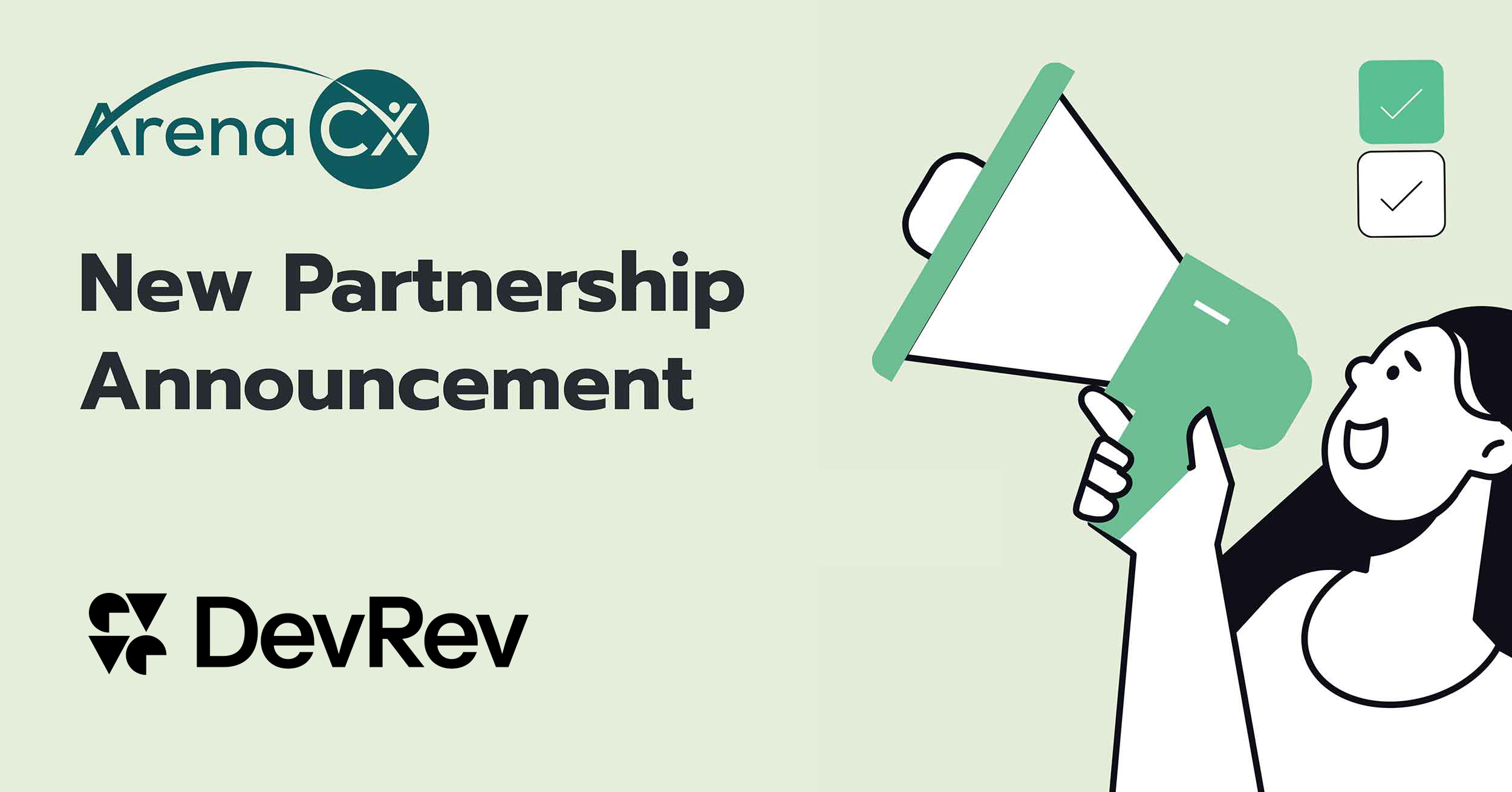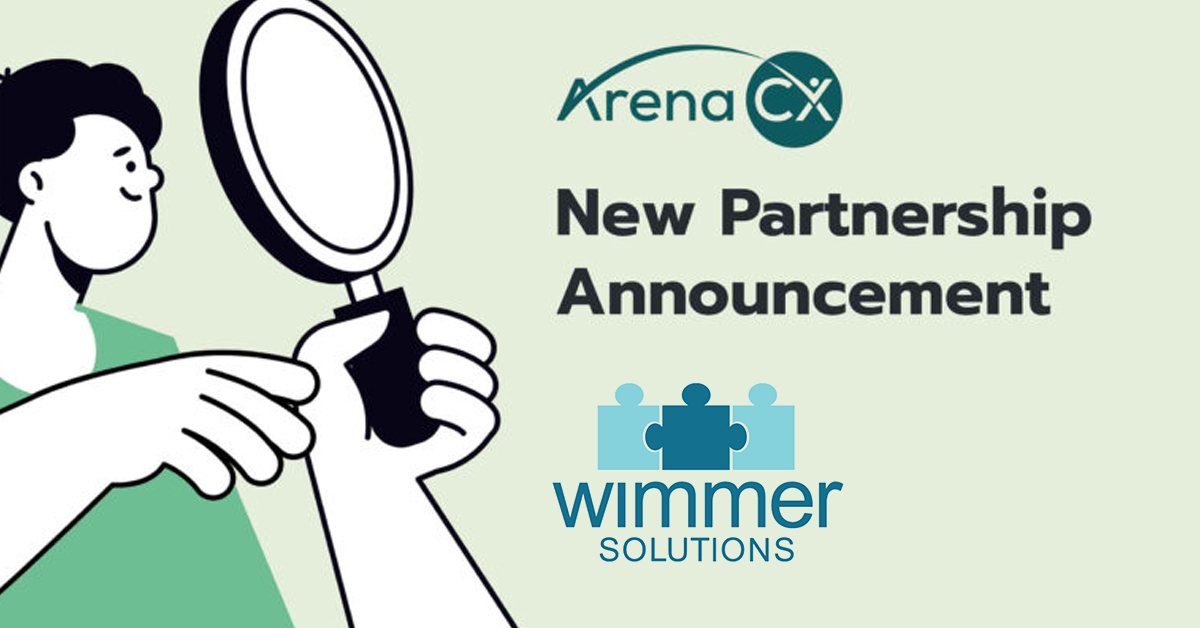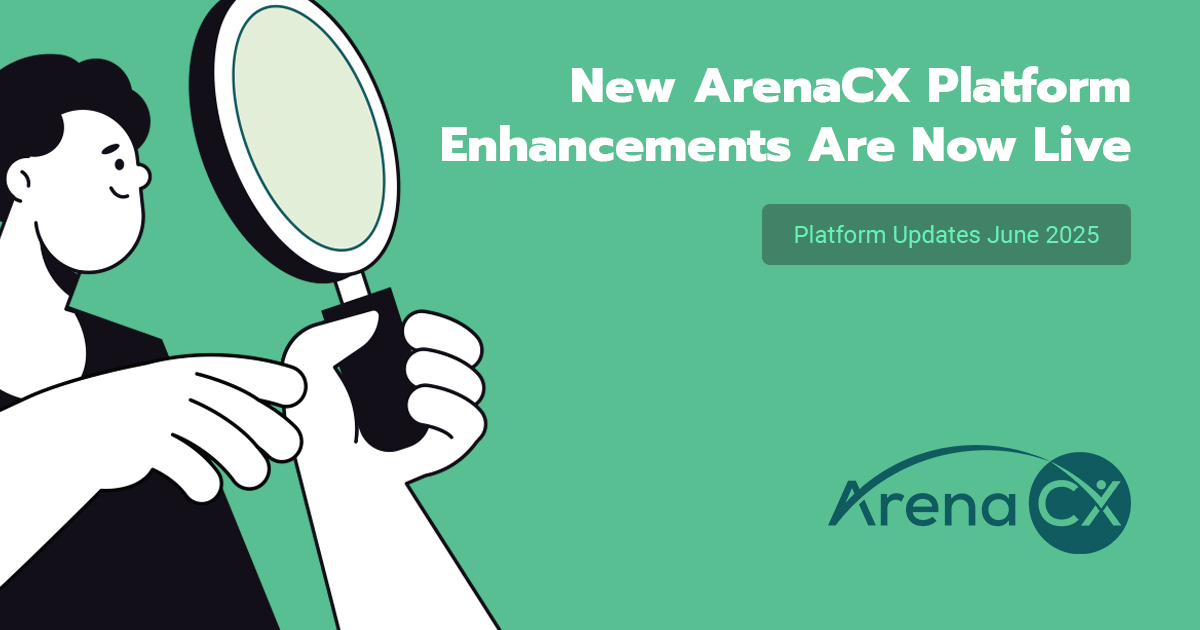Gaining new customers has always been a top priority (and challenge) for small businesses. The COVID-19 pandemic has unfortunately made lead generation even more of a challenge for small businesses who’re struggling to find workers. In fact, the NFIB Research Center reported that 49% of businesses experiencing a staffing shortage say it has caused a moderate or significant loss of sales opportunities.
While we’re finally starting to see the light at the end of the COVID tunnel, it still doesn’t mean small businesses are out of the dark just yet.
As a small business leader, you’re probably wearing many hats. You might be the CEO who is also acting as your business’s Head of Sales and Lead Generation. This means you’re probably extremely busy trying to set your business strategy, prioritize work, and manage team members with very little leftover time to dedicate to learning how to be an expert in a function that you’re unfamiliar with.
If this sounds like you, you’ve come to exactly the right place. In this blog, we’ll help you break down some ofthe best places to start with digital sales & marketing strategies, how you can build your small team to generate & keep up with demand, and offer tangible tips & tricks you can implement as your business continues to scale.
With so many ways to think about lead generation — and having a small budget and small team to accomplish your sales goals — generating leads can seem extremely overwhelming.

5 simple digital sales & marketing strategies to apply to your small business:
Step 1: Build your ideal customer profile or buyer persona
The first step in building an effective lead generation campaign is understanding and identifying who and where your ideal customers are. Simply, determining what type of people are most likely to be a strong fit to adopt your product or service and where are you most likely to reach them.
The persona(s) you build in this step are critical as they will help guide you through the following steps in this blog and through the strategy development of the rest of your sales and marketing campaigns. The goal of creating these buyer personas is to give you a relatable prospect to target your messaging and advertising toward.
The first thing to consider when building your buyer persona is to be as specific as possible. Whether you are selling a generic product or service that nearly anyone can use, or you’re selling something very niche that is only used by a very exclusive group of people, you want to be as narrow as possible with the characteristics of this profile.
The reason for this specificity is that
1) it will help you create very tailored and relatable messages to the types of customers you want most, and
2) it will help you better understand how and where to deploy your marketing and lead generation dollars. Advertising broadly can be extremely expensive with little return if your message isn’t resonating with the audience it is being shown to.
For the purposes of this blog, I’ll highlight the main characteristics of a strong buyer persona to get you thinking about how you can tailor one for your business. Remember, not all buyer personas will look the same.
For example, if you are a business selling software to other businesses, you probably care more about the company, job title, level of education, etc. about your ideal customer. On the other hand, if you’re selling designer handbags to consumers you likely care more about gender, income, etc.
Characteristics to include in a detailed buyer persona:
- Demographic information
This should include details like the age, gender, income, whether or not they’re likely to have a family, etc. - Customer pain points & challenges:
What challenges or pains is a prospect facing that your business could help them solve? - Company & job information:
Where would the ideal customer work? Which industry? What is their job title? - Media & publications information:
What type of publications or online media does your ideal customer read or engage with? Are they present on certain social media platforms? Are there specific magazines or blogs they love to read? - Hobbies:
What hobbies or interests does your ideal customer partake in (this could be especially helpful in determining where it makes sense to spend money on advertising).
The list above is not exhaustive, but gives you a good place to start when thinking about your ideal customer profiles. To illustrate this point further, consider this example:
You’ve just opened a pool chemical store. Your buyer persona might look something like this: A male over the age of 35 who owns a single family home with an in-ground or above-ground pool in his backyard. He is married and has teenage children. Their household income exceeds $200k per year and he can be found reading blogs about lawn care and landscaping. He likes to partake in discussions on Facebook in groups that talk about lawn care and pool maintenance. A common challenge he experiences is balancing the PH of his water, generally in the spring and summer months.
By pinpointing these demographic and psychographic traits of your current customers, you’re able to build a robust profile to target very specific, relatable buyer personas, while avoiding spending money on advertising or marketing to those who simply aren’t ready to buy what you’re selling.
If the idea of buyer personas is new to you, or you’re new to sales and want to make sure you are on the right track, you might want to consider leveraging external sales experts to help you refine your target and develop sales and marketing messages that resonate with that persona.
We have multiple partners in our network that specialize in providing end-to-end sales strategy and execution that can help you build that persona, craft your messaging, and deploy resources to find and close deals..
Step 2: Optimize your website to accurately reflect your business
Your website is one of the first things prospective customers see about you when researching your company. Having a professional-looking website that accurately reflects your business is critical to potential future customers who’re trying to validate your credibility.
This is just one of the many places the detailed buyer persona you create can start providing value. When considering messaging for your site, you will want to keep your ideal customer in mind the whole time. Consider how you would talk to someone like them — in fact, you’ll often want to write as if you are talking directly to them.
As a small business with a small budget, I get that this is easier said than done as it may require you or another member of your small team to put on quite a few hats: your graphic design hat, maybe even your front-end developer hat, your customer experience hat, your copy and content writing hat… the list goes on!
Building an effective and beautiful website that’s optimized for desktop and mobile isn’t easy and getting it just right can take time. Not to mention the testing that is recommended to give website visitors the best experience possible and to make it easy for them to purchase your product or learn more about your service.
Fortunately, there are many affordable website builders out there that don’t cost an arm and a leg and can be easily designed and updated by someone who isn’t a designer or developer.
But, if making or updating your website isn’t your thing, don’t worry! We can help. Our marketplace is filled with digital marketing experts who can help you build and optimize your website, ensuring you’re getting the most of your time and budget.
Step 3: Have an active social media presence & start investing in paid social advertising
This step is kind of a “two-parter” with the end goal of getting in front of the right customers with relatable messaging and reminding them that you’re there when they need you. To be noticed and remain top of mind for consumers, you want to show up and be present on the social media channels where your ideal customers are engaging.
These channels will likely be different depending on what you’re selling. If you’re selling software to businesses or business professionals, you might find more success on a platform like LinkedIn. On the other hand, if you’re selling sporting goods, Facebook or Instagram might be a more likely place to find your target audience.
Whichever channel makes sense for you, it’s important to build your brand presence with a page for your business and post consistently. Posting on a regular cadence can help keep your brand top of mind for in-market prospects and help generate brand awareness for those who may not have heard of your brand.
If you’re new to social media marketing for businesses, there are tons of resources available online to help you create a social media marketing plan. Hootsuite shares their 8 step guide to creating a social media strategy and they include a free easy-to-follow template to help you get started.
Creating these posts, posting consistently, and interacting with those who engage with your posts is a great start. But I mentioned there are two parts to this step: the second part is tapping into paid social advertising. Whether you want to get started advertising on Facebook or LinkedIn, there are plenty of great step-by-step guides to help you set up and start running your first social media ads.
Since there are so many great resources available through a quick Google search, I won’t dive into the nitty-gritty of how to set up each type of ad in this blog, but instead I’ll provide a few helpful tips that small businesses with small budgets will find especially useful.

Tip 1: Start small.
One great thing about getting started with social media marketing is that you don’t have to spend hundreds of dollars a day to play in this space. Start with a small budget of just $10/day with a more narrow audience based on your ideal buyer persona. Of course, the larger the budget the more people will see your ads, but it isn’t necessary for getting started.
Tip 2: Don’t overwhelm yourself.
When you’re getting started with social media marketing on different platforms, you’ll notice that there are a LOT of options. Different ad types, different ad groups, different campaigns, creating audiences… it can feel extremely overwhelming and leave you with more questions than before you started.
Take your time to learn how to set up basic ads using their recommended bidding strategies to learn the ropes before expanding into the vast sea of ad types, bidding options, etc.
Tip 3: Don’t try to test too much at once.
Piggybacking off of the second tip, it can be overwhelming to try to test 5 ads and 5 different messages at the same time. With a smaller budget, I’d recommend testing only a couple of ads at a time so that your spend goes further. If you find that one ad is performing significantly better than the other, swap out the lower performing ad with a new ad message or creative and keep A/B testing for the winner.
Not a designer? There are plenty of free design tools out there, like Canva, with pre-made templates that make it easy for non-designers to create beautiful and compelling ads quickly and easily.
Tip 4: Don’t make changes to your ads daily.
While there’s no one right answer on exactly how long you should let an ad run before making changes, I recommend waiting at least 3-5 days before drawing conclusions about how your ads are performing. Each different social media channel uses algorithms to learn and “grade” your ads based on a number of factors. New ads generally stay in the learning phase until they have been seen or interacted with a certain number of times. If you try to make changes too quickly, the algorithm is likely still learning and your conclusions may be made prematurely.
Tip 5: Focus on getting your target audience right.
When you have a small budget, you’ll want to narrow your audience to give your ads the best chance to reach the most relevant audience. Each different social media platform allows you to target specific audiences based on demographics, professional/work history, interests, etc. Generally, you’ll want to build these audiences to match the buyer persona you identified in Step 1.
If you still don’t know where to start, how much to spend, or which channels are best for you to invest in, that’s okay! Social media marketing has a lot of moving pieces and parts and is always changing. Fortunately, we can match you with social media teams that your small business can afford.
Step 4: Build paid search campaigns
Another extremely helpful marketing tactic you should implement is building out a paid search campaign. This means advertising on search engines like Google or Bing, for example.
One of the most common ways to use paid search campaigns is to target prospects who are in-market and are searching for keywords that match what your company is selling.
An example of this could be if you’re a small business selling organic dog treats. You might use keywords like: organic dog bones, Healthy treats for dogs, etc.
The beauty of paid search is that it helps you get in front of consumers who’re in the market or interested in your product or service right now.
Similarly to paid social media campaigns, there are tons of resources for how to set up your first Google Ads campaign. If you’ve never done it before, it can admittedly be equally overwhelming to setting up your first paid social media ads. To help, here is a great article by Neil Patel, a top marketing influencer, that breaks down what Google AdWords is and how to set up your campaign step-by-step.
Though I won’t repeat them again here, the same tips and tricks I mentioned for social media marketing apply to paid search, too.
The most important thing to remember is to try to think like your buyer persona. When you’re building lists of keywords think:
What would they be typing into Google to find my product?
If I were in their shoes experiencing the problem (i.e.my vet recommended I change my dog’s diet and suggested organic products) what would I be searching for and what messaging would catch my eye?
You’ll want to write ads that speak to your target audience (buyer persona), are compelling, and make users want to click on your ad and learn more about your business. In other words, it’s time to put your copy-writing cap on.
Here are a few additional tips to help you generate more clicks and stand out among your competitors:
Tip 1: Stand out by offering something unique.
When writing your ads, try offering something that makes you stand out from your other brands bidding on similar keywords. Some examples of ways you could do this might be offering a free trial, providing a free quote, or giving a customer 25% off their first order. (Just be sure that if you offer a discount you have a way to track and apply it to that customer’s order.)
Tip 2: Link users to the most relevant landing pages.
When a prospect is interested enough to click on your ad, you want to make sure you keep them on your website. If you’re recommending a specific product in your ad, make sure you link them to that exact product page as opposed to your more generic homepage. You want to try to create as little friction as possible for the customer, especially when they’re in buying mode.
Tip 3: Optimize. Optimize. Optimize.
Once you get your initial Google Ads campaign set up and you’ve determined the keywords you want to target, keep a close on the search terms people are typing in to find your product. Sometimes you will think a keyword is great, and then you’ll realize it’s capturing people with the wrong intent.
For example, maybe you chose to use the broad keyword of healthy treats for dogs.When you look at the search terms, though, you’re seeing that your ads are showing for people who are querying healthy treats. Unfortunately, Google has started showing your ads to people with the wrong intent — those looking for healthy treats for humans not dogs. In cases like this, you’ll want to optimize your ads by using the negative keyword and keyword matching capabilities offered by Google Ads.
Not feeling confident in setting up and optimizing your own paid search campaigns? Our team of paid search optimization experts would love to help!
Step 5: Assign a sales prospecting team to nurture and close leads
Once you’ve built a professional website, established your profile on social media channels, and have started advertising on paid social networks and search engines, you’ll start seeing traction on your website and gathering leads who want to learn more.
Now, what do you do with these new leads and increased interest?
Here’s where you must take a targeted approach to the way you reach out to and engage with the leads in your ideal customer profile. This approach is known as your sales plan, and it is the general “rule of thumb” your sales team should follow when starting to talk to prospects.
Often, this consists of an immediate call or email to the contact who filled out the form. The sooner you can reach them, the better. These leads are great as they’ve shown intent and are ready and willing to hear from you.
But, not every lead is that “easy”. Depending on the type of product or service you’re selling, you might need to be very specific and strategic about the companies you reach out to and get in front of.
This is where having a sales team with a very detailed sales plan is critical. Here’s a great article about the inbound sales strategies skilled sales teams often use, following the stages: Identify > Connect > Explore > Advise.
When you’re speaking to a customer who filled out a form and raised their hand to speak with you, the “identify” stage is taken care of through the digital sales & marketing campaigns you set up following the steps above. When you’re targeting very specific prospects, the “Identify” stage can be extremely tedious, often requiring scouring social media profiles & company websites to find the right contacts at the companies you’re hoping to reach.
When structuring up your sales team, it’s important to keep these different sales stages in mind, and build your team accordingly. As a small business, you’re probably thinking okay, great, but I don’t have the staff or the time to dig through profiles and outreach to hundreds of prospects.
You’re not alone. This is an extremely common problem nearly all small businesses face. They need new customers, but they’re so strained for resources that it’s nearly impossible to do what it takes to get them.
What I recommend is considering using a team of skilled, outsourced sales professionals to perform the lead generation techniques that require the time and effort your internal team simply doesn’t have. If you’ve never outsourced a function before, you might be hesitant to do so, but you shouldn’t be. We wrote a blog on why outsourcing can be extremely beneficial to your business; saving you time and money.
The beauty of leveraging the help of an outsourced sales team is that this is what they do. Whether you need end-to-end sales, from designing your strategy, to crafting custom messaging, to sourcing prospects and building your sales pipeline for you — or whether you already have a sales plan in place and simply need warm bodies to execute on it, there is a perfect team out there who is ready to deliver.
Rather than paying the overhead to bring on an internal sales team, you can use outside resources that cost much less and produce the same (if not better) results.
Running a small business can be extremely challenging. What makes it easier is figuring out how to make the most of your existing resources to maximize your people’s time and your budget.
We’re confident that by applying these steps above, you’ll be building a strong sales & marketing foundation to quickly increase your leads and close more deals.
If you’re interested in learning more about outsourcing your sales function with ArenaCX, we’d love to talk!
Related Articles
Want more? Here are some other blog posts, topics and articles you might be interested in.













